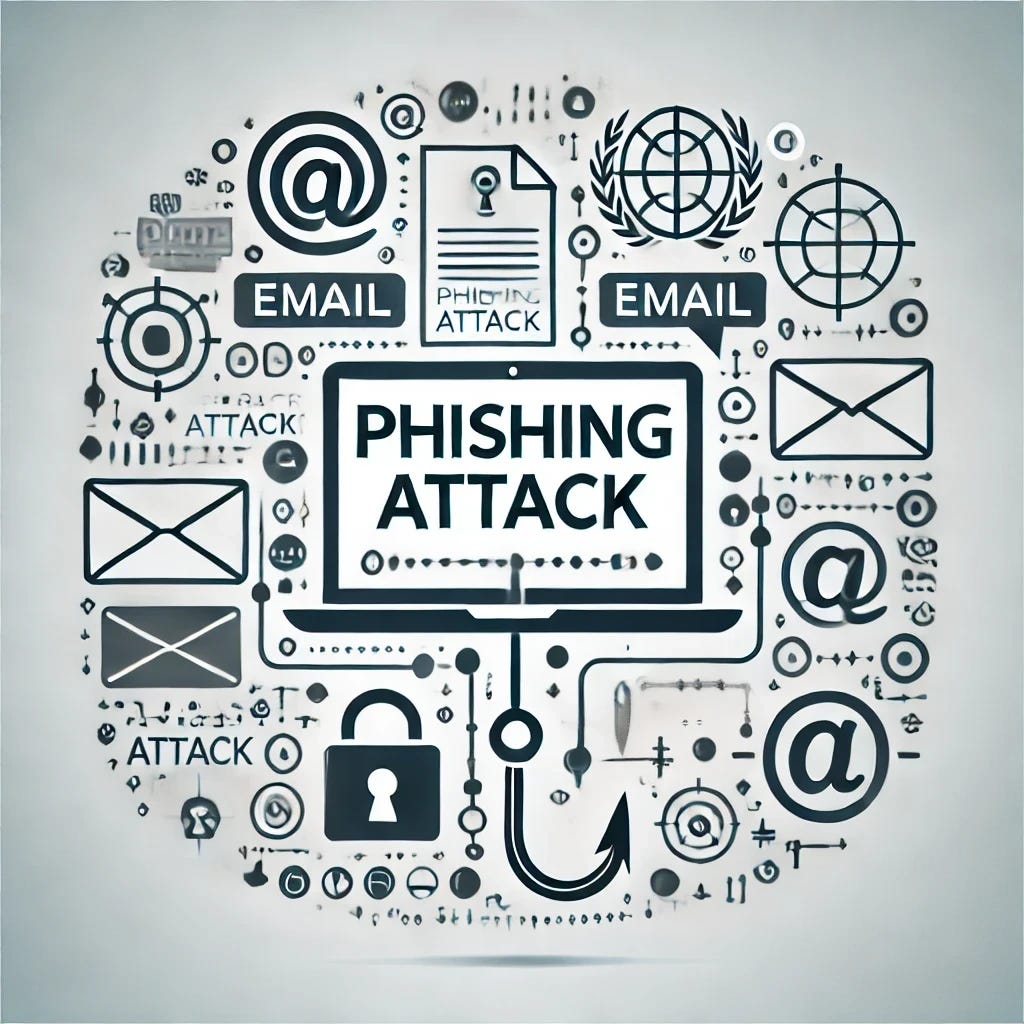Phishing remains one of the most prevalent and damaging cyber threats facing individuals and organizations today. As cybercriminals continually refine their techniques, the need for awareness, vigilance, and proactive measures becomes even more crucial. This article delves deeply into the mechanics of phishing, its various forms, how it evolves, and the best strategies for mitigating the risks associated with this ever-present threat. Ensuring the information is 100% accurate, we will explore phishing from all angles to equip readers with a thorough understanding of this critical cybersecurity issue.
Note: Some or all of this content may have been created with the assistance of AI to help present the information clearly and effectively. While AI can be a useful tool for content generation, it is not infallible and may occasionally make mistakes or omit nuances. Our goal is to provide valuable insights while being fully transparent about the methods used to produce this content.
1. What Is Phishing?
Phishing is a cyberattack method that involves tricking individuals into providing sensitive information, such as usernames, passwords, and credit card details, or convincing them to download malicious software. The term "phishing" derives from the idea of "fishing" for information using deceptive bait. Attackers often impersonate legitimate organizations or trusted individuals, using email, social media, or other digital channels to exploit human vulnerabilities and bypass security measures.
Phishing attacks primarily exploit trust, curiosity, or urgency. By mimicking real businesses or urgent situations—such as a notice about a compromised bank account—phishers create a false sense of security or fear to prompt users into making rushed, unwise decisions.
2. The Evolution of Phishing
Over the years, phishing techniques have evolved in response to advances in technology and the growing awareness of users. Early phishing attempts were often crude and poorly constructed, featuring generic messages with obvious spelling errors. However, modern phishing campaigns are increasingly sophisticated, utilizing professional-looking graphics, convincing language, and personalized details to create an illusion of authenticity.
Spear Phishing is a notable evolution of traditional phishing. Spear phishing targets specific individuals or organizations by tailoring the content to appear more personalized. For instance, an attacker may reference recent projects or the names of colleagues to establish credibility. Such attacks are often used in corporate espionage, where attackers seek to breach organizations for sensitive information or financial gain.
Another evolution is Whaling, which targets high-profile individuals like CEOs or senior executives. These attacks are meticulously crafted, with attackers researching their targets extensively to increase the likelihood of success.
The proliferation of Phishing-as-a-Service (PhaaS) has further complicated the situation. PhaaS platforms on the dark web enable inexperienced criminals to conduct phishing campaigns, lowering the entry barrier and contributing to an increase in phishing incidents globally.
3. Common Types of Phishing Attacks
Phishing comes in various forms, each exploiting different communication channels and attack vectors. Understanding these types helps in recognizing and mitigating risks:
Email Phishing
The most common type of phishing attack, email phishing, involves sending deceptive emails that prompt recipients to click on a malicious link or download an infected attachment. These emails often resemble legitimate communications from banks, popular services, or known contacts. Attackers may use email spoofing techniques to make the message appear as if it was sent from a genuine source.
Spear Phishing
Unlike generic phishing emails, spear phishing targets specific individuals or groups. Attackers gather information about their victims from public sources such as social media, then use that information to craft convincing emails that appear relevant and trustworthy. Spear phishing is especially effective because it exploits familiarity and personal context.
Smishing (SMS Phishing)
Smishing is a form of phishing that uses text messages to deceive recipients. With the widespread use of smartphones, smishing has become more common. Attackers send SMS messages that appear to be from trusted entities, such as financial institutions or service providers, urging recipients to click on a link or respond with personal information.
Vishing (Voice Phishing)
Vishing is a phishing technique that involves phone calls instead of emails or texts. Attackers impersonate representatives from banks, government agencies, or companies and attempt to extract sensitive information from the victim. The caller might create a sense of urgency or fear, such as threatening legal action if certain information is not provided.
Clone Phishing
In Clone Phishing, attackers create an exact copy of a legitimate email that the victim has previously received. They modify it slightly, replacing a link or attachment with a malicious version, and resend it. Because the victim recognizes the email and its content, they are more likely to fall for the attack.
Angler Phishing
Angler Phishing is a relatively new form of phishing that exploits social media platforms. Attackers impersonate customer service accounts to trick users into divulging their personal information. For instance, a fake customer service account may respond to a user’s complaint on Twitter, prompting them to follow a malicious link or share sensitive details.
4. How Attackers Bypass Security Measures
Phishing attackers use various techniques to bypass email filters and security systems designed to detect malicious activities. One common method is URL obfuscation, where attackers use shortened URLs or slightly altered domain names (known as typosquatting) to disguise the true destination of a link.
Attackers also make use of HTML and JavaScript tricks to hide malicious elements within seemingly benign code, making it difficult for automated systems to detect. Some sophisticated phishing campaigns use multiple redirections to obscure the destination URL, making it challenging for both users and email filters to recognize malicious content.
In recent years, AI and machine learning have been leveraged by attackers to create more convincing phishing emails. By analyzing vast amounts of data, AI can generate messages that are well-written, personalized, and highly effective in tricking recipients.
5. The Human Factor: Why Phishing Works
The success of phishing lies largely in its ability to exploit human psychology. Attackers craft messages that tap into basic emotions such as fear, urgency, curiosity, or even greed. For example, an email that claims "Your account has been compromised" triggers fear, leading the recipient to act impulsively.
People are often the weakest link in the cybersecurity chain, and phishing capitalizes on this vulnerability. Even well-trained employees can fall victim to a well-crafted phishing attack, especially when they are busy, distracted, or under pressure.
6. How to Protect Against Phishing
Mitigating phishing threats requires a multi-layered approach that combines technology, user education, and strong security policies. Here are some effective strategies to reduce the risk of falling victim to phishing:
1. User Education and Awareness
Continuous training is crucial in equipping individuals to recognize and respond to phishing attempts. Employees and users should be educated on how to identify suspicious emails, verify links before clicking, and report potential phishing incidents. Simulated phishing exercises can be effective in reinforcing this training, allowing users to experience phishing scenarios in a controlled environment.
2. Email Filtering and Anti-Phishing Software
Organizations should deploy advanced email filtering solutions that detect and block phishing emails before they reach users' inboxes. Anti-phishing tools use techniques such as machine learning, domain reputation analysis, and URL inspection to filter out malicious content.
3. Multi-Factor Authentication (MFA)
Multi-Factor Authentication (MFA) adds an extra layer of protection even if a user's credentials are compromised. By requiring additional verification steps—such as a fingerprint scan or a one-time code sent to a mobile device—MFA reduces the chances of a successful phishing attack.
4. Verify Sender Information
Users should always verify the sender's information before clicking on links or downloading attachments. Phishing emails often contain subtle errors in the sender's address, such as incorrect domain names or unexpected spelling variations. Hovering over email addresses and URLs can help reveal inconsistencies that indicate a phishing attempt.
5. Implement a Zero Trust Approach
A Zero Trust approach to cybersecurity assumes that every device, user, and network connection could be compromised. By restricting access, continuously verifying users and devices, and limiting what information each entity can access, organizations can reduce the impact of a successful phishing attack.
6. Use Endpoint Detection and Response (EDR)
Endpoint Detection and Response (EDR) solutions can identify suspicious activity on devices, such as the installation of unexpected software following a successful phishing attack. EDR provides continuous monitoring, enabling swift responses to potential threats and reducing the dwell time of malicious actors within a system.
7. Responding to a Phishing Attack
Even with preventive measures in place, phishing attacks may still succeed. A well-prepared response plan is crucial for minimizing damage:
Report the Incident: Users should immediately report suspected phishing attempts to their IT department or incident response team.
Disconnect Affected Devices: If a phishing email results in the compromise of a device, it should be disconnected from the network to prevent the spread of malware or further data exfiltration.
Change Credentials: Users should change compromised passwords as soon as possible, particularly for accounts that may have been affected.
Incident Analysis: Conduct a thorough analysis of the incident to determine how the phishing attack succeeded and what improvements can be made to prevent future incidents.
8. The Future of Phishing
Phishing will continue to evolve, leveraging new technologies and exploiting emerging platforms to reach unsuspecting victims. With the rise of deepfake technology, there is potential for voice and video phishing to become even more convincing, as attackers use synthetic media to impersonate trusted individuals.
The increasing integration of IoT devices into everyday life presents another potential target for attackers. As these devices are often not designed with robust security features, they could become a weak point through which phishing attacks are launched.
Organizations must remain vigilant, adapt to emerging threats, and invest in new technologies that enhance their ability to detect and mitigate phishing attacks. Collaboration between the private sector, government, and educational institutions is also critical in raising awareness and developing effective countermeasures against this pervasive threat.
Phishing is a significant cybersecurity challenge that exploits human behavior to compromise systems and steal sensitive information. The rise of advanced tactics, including AI-driven phishing campaigns, underscores the importance of vigilance and the adoption of multi-layered security approaches.
Awareness, combined with the use of advanced technologies and a proactive mindset, is the key to protecting against phishing threats. By understanding the various forms of phishing, how attackers operate, and implementing robust defenses, individuals and organizations can reduce their vulnerability and improve their overall security posture in the face of this ever-evolving threat.



